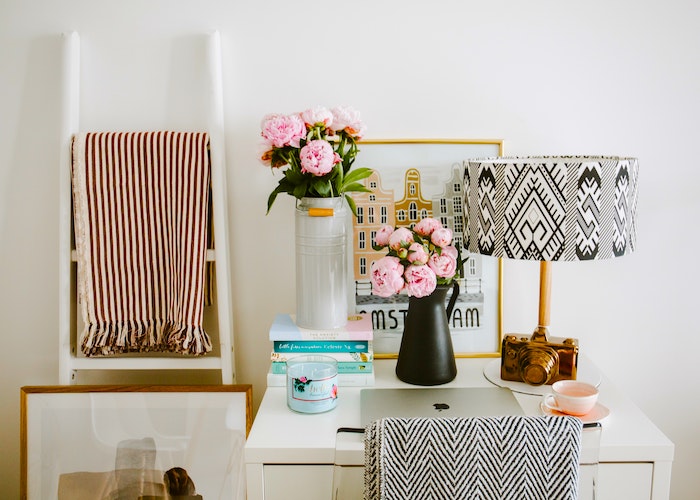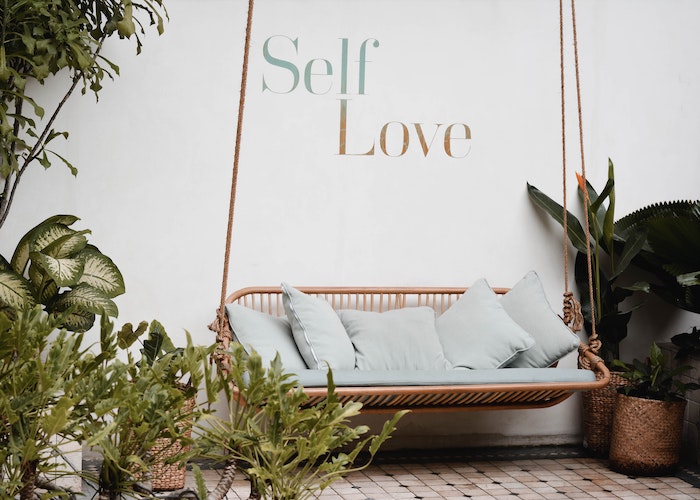3 Stress-Free Strategies That Boost My Mood When I’m Struggling To Feel Motivated

Are you lazy, or are you in need of a process that you actually believe in?
Like many others, the extra alone time I had during quarantine made me hyper-aware of where I currently stood with my physical health and finances. As I began to take a look at what I wanted to – and realistically could – change about myself and my lifestyle, I began to mindlessly adopt every challenge and routine that I mentally came across.
However, it soon became clear that there was little to no progress being made at tackling these goals because I was blindly diving into them with no true purpose — and we all know how important it is to live with intention. I recently came across a quote by writer Michell C. Clark that read:
“Are you lazy, or are you in need of a process that you actually believe in?”
The first step in achieving your goal(s) is to truly believe in what you’re doing; if you don’t believe in the process – and furthermore the purpose of that process – it will likely never work for you. The moment I acknowledged this, I stopped speeding towards the imaginary “finish line,” allowing me to experience real progress in my own process, in my own time.
Adopting a practical checkpoint system that allows room for me to check-in on myself, all the while tracking my personal progress and holding myself accountable, has made all the difference for me.
With that said, here’s what to keep in mind to achieve the best, stress-free results towards your personal growth.
1. Saying No To The Numbers Game
I learned the hard way that overwhelmingly large goals with looming deadlines and “streak-like” expectations don’t work for me. In the past, I tried and failed to complete 30-day fitness challenges, or even two-week fitness challenges (Chloe Ting, anyone?) Somewhere along the way, I found myself falling off or having skipped more days than recommended. I also tried – and failed – to meet several savings goals, by telling myself I would have “X” amount of money by a set date. Sometimes these things weren’t realistic for me, or I didn’t have the smaller checkpoint goals in place to motivate me along the way. Ultimately I was setting myself up for failure from the beginning, something I didn’t know at the time.
2. Embrace Smaller, Short Term Goals That Add Up To Your Bigger Picture
All large goals require smaller goals, and these smaller goals are where the real action and habit-forming takes place. To be clear, at the time, my “big goals” consisted of becoming more fit in thirty days and multiplying my savings by the end of the year. But by taking the strict time constraints off of those goals, I have been able to focus solely on progress instead of shortcomings. I now measure my progress in smaller increments such as: Did I work out three days in a row? Great, that’s more than I did before, let’s see if I can match that for another three days and build upon it! Or even: Did I not spend money on fast food or online shopping for a week? Great, that’s one week’s worth of money that can go into my savings if still left over at the end of the month!
Instead of taking $1000 out of my paycheck and putting it into my savings account, knowing there is a high chance I will need to dip into it before my next paycheck, I now simply lower the amount I transfer to my savings. This way, if anything happens to be left over after all of my expenses, I make a bonus deposit into my savings account. While this may sound like common sense to some, the reality is that prior to this, I was aiming way too high, and not leaving any room “life” to happen. By giving myself such astronomical expectations, I was actually creating more setbacks for myself rather than moving forward. Now that I’ve taken the start-small-and-build-up approach to my savings, I’m finally able to do more by the end of each month.
Now, as for the actual method, I typically give myself a three-day range for my goals. This includes not spending money for three days and exercising for three consecutive days. Once I have made it to that checkpoint I reevaluate: Can I go another day or another three days?
If for whatever reason I don’t double my consecutive days or I end up taking some kind of break, I simply start over and meet my most recent record. An unwritten rule I have is to never let my “days off” exceed my “days on”. I have since graduated to four consecutive days of no unnecessary spending, typically a Monday-Thursday schedule, when I have groceries stocked and little to no reason to eat out. Plus between work and school, I usually don’t have any time on those days to do any leisurely shopping.
3. The Art Of A New Day & Starting Over
Instead of being intimidated by such high goals and giving up when I miss a day, I now start over and try to match my most recent feat. It’s refreshing to remind myself of what I was able to previously conquer in order to keep myself motivated.
Essentially the end goal is the same, but the daily shift in mindset makes a huge difference for me. Because of this laxer approach to tackling otherwise intimidating tasks, I’m able to have more energy and optimism going into each challenge I set before myself. Not only am I able to take on one day at a time without the fear of failure but it actually becomes a fun little game, or race against myself, to see what I can accomplish each day. The real magic in this system is the removal of the mentality that you’ve failed before you even started. Approaching each day as an opportunity to start “anew,” versus being behind from the day before, allows you to feel ahead of the day, instead of feeling like you’re playing an imaginary – and overwhelming – game of “catch-up” with yourself.
(This post was originally published October 2020)
Cierra is a self-published poet and freelance writer with a passion for mental health and self-help. When she is not writing you can find her watching horror movies or attending any and every concert in the Washington, D.C. area.
Images via Unsplash





